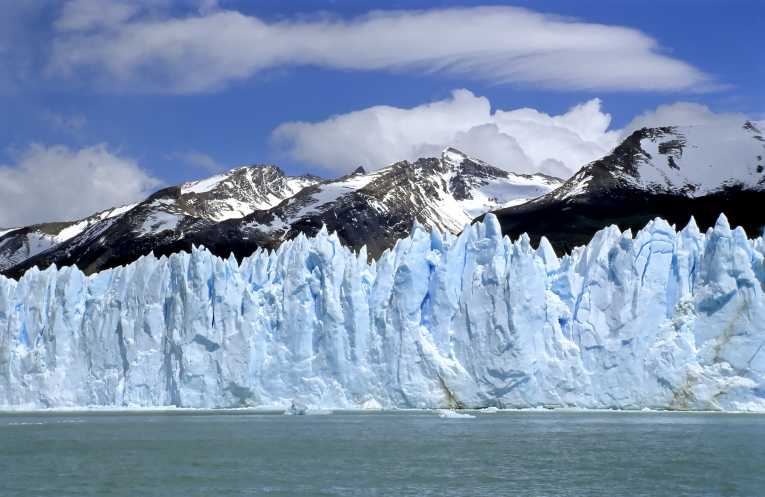Their contribution to global sea-level rises may be minuscule, but it is the increase in the rate of melting of the Patagonian that has scientists paying attention. The glaciers flowing from the steep mountains on the tip of the South American continent, have been one of the most visible of global glacial retreats. But for scientists concerned about the impact of glacier melt, it is important to know whether these recent losses are due to natural variability, or to man-made climate change.
Now a scientific team from Aberystwyth University and the University of Exeter in the UK, as well as Stockholm University in Sweden, has published a study in Nature Geoscience that helps nail that question. It used a combination of detailed satellite images, and tree-ring and lichen-dating. What the team were looking out for were the lines of debris left by retreating glaciers - like rings of soap-scum on an emptying bath.
At the maximum front of a glacier, it dumps a large mound of rocks, known as a moraine; whilst along the sides of the glacier, debris lines the valley-sides, know as trim-lines. By mapping these, and using the dating information, the team was able to identify the maximum historical extent of the glaciers. Over the period known as the Little Ice Age, from about 1650-1850 AD, temperatures here were much cooler - and that is when the Patagonian ice caps swelled to their largest.
Once the previous size of the glaciers was known for specific points in the past, the volume was reconstructed from the shape of the valleys. Then the loss of ice could be calculated by reference to the current glacier extent. This allowed the numbers for the North Patagonia Icefield to be equated to 100 cubic km lost since 1870, with 500 cubic km of ice lost for the South Patagonia Icefield since 1650.
That nets to a tiny 0.005 mm per year contribution to sea level per year; but Patagonia's icefields are only a small component of global ice stocks. It is the comparison of these historical losses to current rates of ice melt, seen in the last 3 decades, that is most worrying. Those are ten time faster than these long-term rates - and man is the likely culprit, according to the paper.
The team concludes that ''Our data suggest that the Patagonian ice fields are contributing to sea-level rise at an increasing rate. This mirrors the significant rise in global temperatures detected over the past 30 years, supporting the conclusion that there is a global trend toward enhanced glacier frontal recession in recent decades and providing support for the assertion that glacier recession can be attributed to recent warming.''










